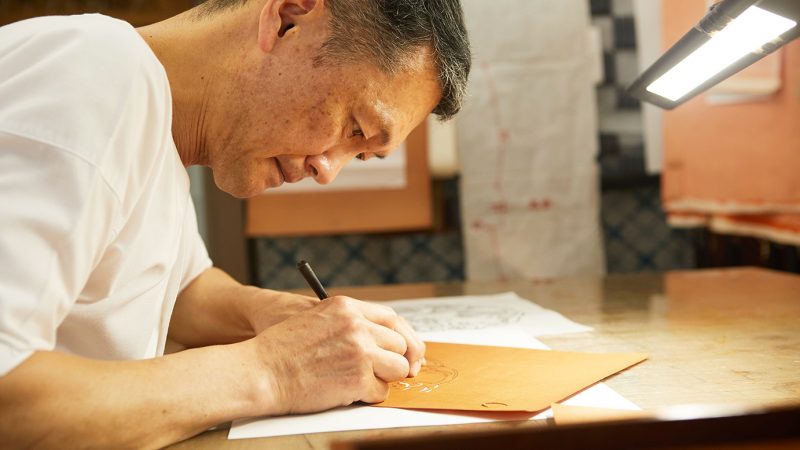
An exciting energy and playful mind, leads to futuristic work
There were many restaurants in Nihonbashi Hamacho, where Hamacho Takatora is located. “There was a time when you could not only hear songs and the sound of shamisen, but also invite a geisha to the restaurant.”The second-generation owner Kinya Takahashi did “kouta” since he was young, and he took lessons from his master in this work room. I used to listen as I worked, and I started to want to learn, so I was taught by word of mouth by the same master.”

There are products born out of the “kouta” that I learned from work. “The tenugui on the left in the photo sings about a geisha and her husband's love, “Mate to iunara gonen wa oroka yanagi shinme no karerumade tokaku ukiyo ha kisanjina nohohonde kurashansen”.
While singing, an idea comes up, how the song can be designed on a tenugui. I drew a picture, carved a mold, and dyed the tenugui cloth and that's how products work. You accumulate money through “Kouta” practice, but the output of my work brings it back. I think it's very idealistic to give shape to something and handing it over to someone else, because then, the culture remains.”

Takabayashi-san says he only continues to do what he truly loves. “I think it's important to have the passion to create something that people will find attractive. If not so, there wouldn't be a structure where people would want to request what they want. On developing products, passion is necessary. if there's no passion, it probably won't be lustrous.” The products of Hamacho Takatora, continue to express the atmosphere of Edo culture with the passion and skill of an artisan.

